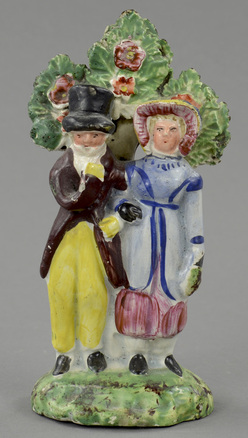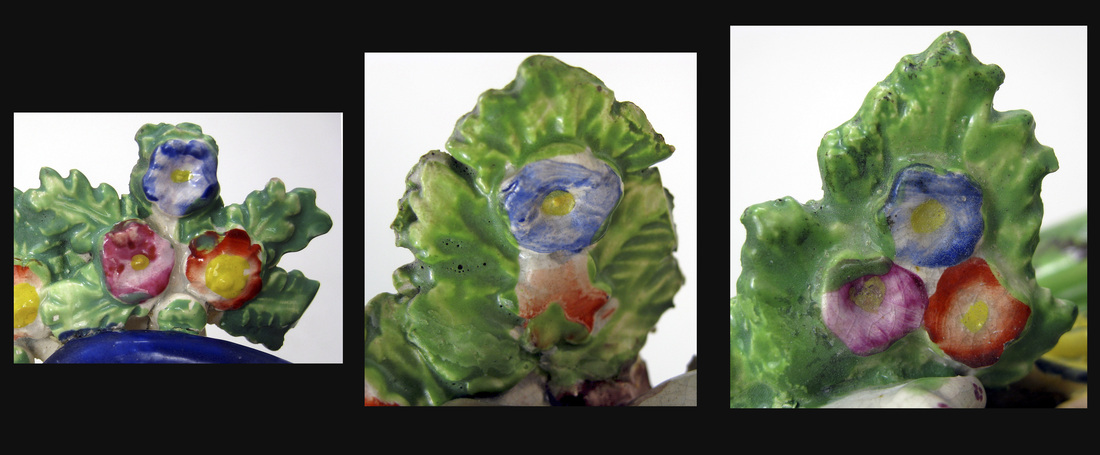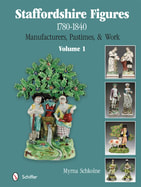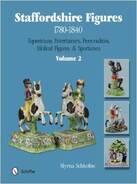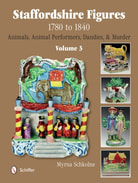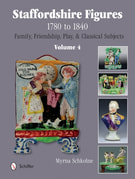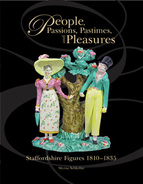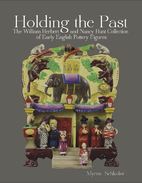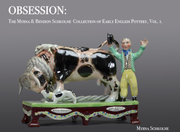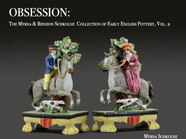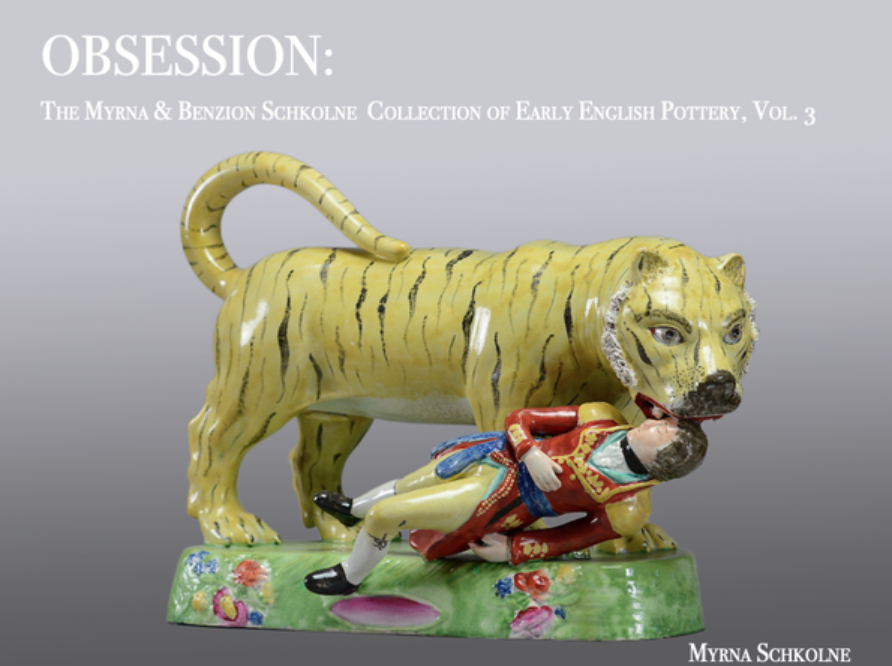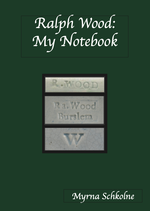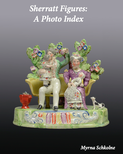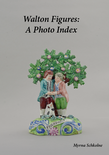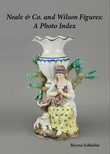The pot bank that made this group incorporated a specific flower into the bocage. The flower--a round, five-petalled flower--is integral to the leaf. In other words, it appears to have been molded with the leaf rather than being applied afterwards.
- In the first picture, the red flower with a raised center is a carnation, rather like those used by Salt and very many other potters.
- In the second picture, the orange flower is star shaped.
Figures with these round flowers exhibit other specific characteristics---but that is for another time. As we don't know the name of the potter who made this cohesive group of figures, what do we call it? I have dubbed it the Blue Group.
By now, you must be looking back at the pictures and thinking I have lost it. Why blue, for heaven's sake? Well, the reason is that very many Blue Group figures have blue on their bases, and sometimes blue decorates their bocages. A few examples are below. (The larger pair of sheep below is from the archive of John Howard)
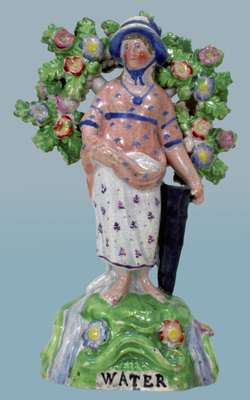
This figure has pink and red bocage flowers that are round with five petals. These are specific to the Blue Group. The blue bocage flowers and the flowers on the base are formed differently. They are carnation-type flowers, with rather proud centers.
